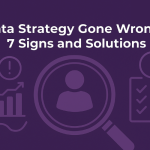- Why Verifying Email Addresses Matters:
- Difference between email validation and verification
- Methods to verify email addresses without sending an email
- Benefits of verifying email addresses before sending
- Common mistakes to avoid when verifying email addresses
- The key to better campaigns through email verification
- FAQs on email verification
Is your email marketing strategy delivering results, or are messages getting lost in the void? One of the most common hurdles in email campaigns is sending messages to unverified addresses. Unverified emails can lead to problems such as high bounce rates, landing in spam folders, and, ultimately, tarnishing the sender’s reputation. This becomes even more critical when attempting to maintain a high sender score for deliverability and engagement.
Sending campaigns without verifying the recipient’s email addresses poses significant risks. Emails that bounce back or end up in spam traps can severely damage future outreach attempts. Beyond the immediate financial waste of sending to non-existent or invalid addresses, poor sender reputation can result in future emails being automatically filtered out of the inbox, regardless of their content or value.
Verification plays a crucial role in ensuring that messages reach real, engaged recipients. By validating email addresses before they are added to any campaign, businesses safeguard their sender reputation and increase the likelihood of successful inbox placement. This process also enhances the efficiency of marketing efforts by targeting only valid, active addresses, thus improving overall conversion rates.
Understanding the importance of verifying email addresses before launching a campaign is the first step toward creating successful email marketing strategies. Verifying each address ensures a clean email list, minimizes the chances of wasted resources, and protects a company’s reputation from being penalized by email service providers.
Why Verifying Email Addresses Matters:
- Increase delivery rates
A verified email list helps reduce the number of bounces, ensuring that messages reach their intended destinations. Invalid addresses lead to undelivered emails, which can skew the effectiveness of campaigns. Verified emails are more likely to land in the inbox, allowing the content to be seen by real recipients. - Enhance messaging effectiveness
Messages are only effective if they reach an actual audience. Sending emails to real, active users increases the chances of engagement. With a clean email list, marketers can analyze campaign performance more accurately, adjusting content to suit the audience based on valid interactions. - Improve ROI
Money spent on email campaigns should translate into measurable results. Unverified emails waste resources by sending messages to addresses that don’t exist or won’t be opened. Verification saves costs by ensuring that efforts are directed toward a valid audience, improving the return on investment. - Prevent reputation damage
Sending emails to non-existent addresses or spam traps can harm the sender’s reputation, potentially leading to blacklisting by internet service providers. A poor sender score can result in emails being marked as spam more frequently, even when they are legitimate. Regularly verifying email addresses helps maintain a positive sender reputation, ensuring that future emails continue to reach inboxes.
Difference between email validation and verification
There is a key distinction between email validation and email verification, and understanding both is crucial for successful email list management.
Email Validation is the initial step in the process of cleaning an email list. This involves checking if the email address is formatted correctly and if the domain (the part after the “@” symbol) exists. Validation ensures that the email address follows proper syntax, such as having the “@” sign and a valid domain name like “.com” or “.org.” However, it does not confirm whether the email address is connected to an active user. In simple terms, email validation checks whether the address is technically valid but doesn’t confirm if it is deliverable.
On the other hand, Email Verification goes further by confirming that the email address is not only valid but also belongs to an active, real person. Verification processes connect with the recipient’s email server through a Simple Mail Transfer Protocol (SMTP) without sending a message, checking whether the email account is active and capable of receiving messages. Verification also helps to identify spam traps, fake accounts, and disposable email addresses, ensuring that only real, engaged users remain on the list.
This difference highlights why both steps are important. While validation prevents the use of technically incorrect email addresses, verification ensures the addresses belong to real, active users, protecting the sender from sending invalid or fraudulent emails.
Methods to verify email addresses without sending an email
Several methods can be used to verify email addresses without sending an actual email. These techniques help businesses maintain a clean email list, reduce bounce rates, and protect their sender reputation. Here are the most effective methods:
1. Syntax and domain checks
The first step in email verification is ensuring that the email address is correctly formatted and the domain is valid. This process involves checking the email structure, such as the presence of “@” and a valid domain extension like “.com.” DNS (Domain Name System) also checks to confirm whether the domain is active and has mail exchange (MX) records, indicating it can receive emails. This method acts as a quick filter for incorrectly formatted or invalid domains.
Email permutation tools are handy for businesses that need to generate various potential email addresses. They help create possible email combinations based on familiar patterns, which is particularly helpful in B2B sales scenarios. For more information on using these tools effectively, check out this blog post on email permutator tools, which provides further insights and step-by-step guides on leveraging these tools.
2. Email verification tools/email finders
Tools like ZeroBounce, NeverBounce, and Hunter use real-time algorithms to verify the existence of email accounts without sending messages. These services query the recipient’s mail server using the Simple Mail Transfer Protocol (SMTP) to check if an inbox exists and can receive messages. These tools often provide bulk verification, making them ideal for cleaning up large email lists. Additionally, they can identify spam traps, catch-all addresses, and disposable emails, allowing marketers to avoid risky contacts.
3. B2B database service providers
Using verified databases for B2B sales can save time and ensure accuracy. Providers like DataGenie, Lusha, Uplead, Cognism, and Dataji offer large lists of pre-verified email addresses that are updated regularly. These services help businesses avoid the need for manual verification and reduce the risk of dealing with invalid addresses. Key features to compare include verification accuracy, real-time updates, ease of use, and overall cost.
Benefits of verifying email addresses before sending
Verifying email addresses before sending campaigns offers numerous advantages, ensuring both marketing efforts’ efficiency and outreach initiatives’ long-term success. Here are the key benefits:
1. Improved ROI
By verifying email lists, businesses ensure that emails reach real, active recipients. This means that marketing budgets are spent more effectively, targeting individuals who are more likely to engage. Eliminating invalid or inactive addresses reduces wasted resources and improves the overall return on investment for email marketing campaigns.
2. Reduced bounce rates
When emails are sent to invalid addresses, they “bounce” back to the sender, signaling that the message was undeliverable. High bounce rates waste resources and can negatively affect a company’s sender reputation. Email service providers often monitor bounce rates, and frequent bounces may cause future emails to be flagged as spam, limiting overall deliverability. Verifying email addresses in advance ensures that only valid recipients are targeted, reducing the chance of high bounce rates.
3. Enhanced sender reputation
Maintaining a positive sender reputation is crucial for ensuring email deliverability. Email service providers often assign sender scores to businesses based on email sending behavior. High bounce rates, spam complaints, or sending to inactive addresses can damage this score. By verifying email addresses, businesses reduce the risk of being blocked, ensuring that their emails continue to reach their intended audience.
4. Better engagement and conversions
Emails that reach valid recipients are more likely to be opened, read, and acted upon. By sending messages to verified addresses, businesses improve their chances of engagement, leading to higher open and click-through rates. This, in turn, drives conversions and helps achieve marketing goals.
5. Data accuracy and List hygiene
Regularly verifying email lists ensures that the data remains clean and up-to-date. This practice improves deliverability and engagement and helps maintain the integrity of the company’s customer database. Accurate data leads to more personalized and effective marketing efforts, contributing to better results over time.
Common mistakes to avoid when verifying email addresses
While verifying email addresses is crucial in maintaining effective email marketing campaigns, certain pitfalls can reduce effectiveness. Here are some common mistakes to avoid:
- Relying on outdated tools
Using old or efficient email verification tools can lead to accurate results. Many outdated platforms need more real-time verification capabilities or the ability to check for more complex issues, such as spam traps and disposable email addresses. It’s important to use modern tools that are updated regularly to reflect changes in domain availability and email server statuses. Failing to do so can result in a high rate of false positives, where emails are incorrectly marked as valid or invalid.
- Not verifying emails frequently
Email lists are dynamic, with contacts frequently changing their email addresses or leaving jobs, especially in B2B contexts. Some businesses verify their lists once and assume the data will remain accurate indefinitely, but this is a mistake. Regular verification is essential to ensure the ongoing accuracy of email lists. Failing to conduct frequent checks increases the likelihood of sending to inactive or outdated addresses, which can result in higher bounce rates.
- Ignoring catch-all domains
Catch-all domains accept emails sent to any address, even if the specific email address does not exist. While these domains may seem valid at first glance, emails sent to them often bounce back later or get lost. Identifying catch-all domains during the verification process is crucial to prevent email campaigns from targeting addresses that will never lead to real engagement.
- Relying on static databases
Many email verification processes depend on static databases, where email statuses are determined based on a one-time snapshot. This can lead to incorrect conclusions if an email address has since become inactive or a domain has changed its policies. Tools with real-time verification capabilities should be prioritized to avoid issues with outdated information.
- Failing to Use Multi-Layered Verification
Using a single-layer verification method, such as checking only the syntax of an email address, is insufficient. A comprehensive verification process should include syntax checks, domain validation, and SMTP server verification to ensure the email address belongs to a real and active user. Overlooking any of these steps can result in sending emails to invalid addresses.
Avoiding these common errors ensures a more reliable and clean email list, which leads to higher engagement rates and better email deliverability.
The key to better campaigns through email verification
Verifying email addresses is not just an option but a necessity for running successful email campaigns. Without proper verification, businesses risk high bounce rates, low engagement, and even damage to their sender’s reputation, which can negatively impact email deliverability. By ensuring that the recipients on your list are valid and active, businesses can optimize their marketing efforts and improve overall campaign performance.
When businesses send emails to unverified addresses, they expose themselves to a range of risks, including landing in spam folders or being blocked. This can make future outreach more challenging, even to valid recipients. Verifying email addresses ensures that each message reaches real people, increasing the likelihood of interaction, engagement, and conversions. Clean, verified lists also lead to a higher return on investment, as marketing budgets are used effectively.
For those involved in sales prospecting, the DataGenie platform offers advanced email verification solutions to ensure your email lists are always accurate. DataGenie’s sales prospecting platform also provides real-time verification of B2B email addresses, allowing businesses to focus their efforts on valid leads and reduce time spent on invalid contacts.
Taking proactive steps to verify email addresses regularly protects your sender’s reputation and helps you maximize your campaigns’ effectiveness. If you want to streamline your prospecting process, try the DataGenie sales prospecting platform today and see how email verification can transform your outreach efforts.
Contact us today to learn more about how DataGenie can help optimize your email marketing and sales prospecting needs.
FAQs on email verification
Q1:How often should email lists be verified?
Email lists should be verified regularly, especially before each major campaign. As email addresses can become outdated due to job changes, domain switches, or inactivity, verifying at least every few months ensures the list remains fresh. For companies with frequent outreach, monthly or even weekly verification is ideal.
Q2:What are the risks of not verifying email addresses?
Please verify email addresses to avoid high bounce rates, negatively impacting the sender’s reputation. Additionally, sending emails to invalid addresses increases the likelihood of being flagged by spam filters, reducing the chances of future emails reaching the inbox. Unverified lists also waste resources by sending messages that real users never open.
Q3:Which email verification tools are the most effective?
Several reliable email verification tools are on the market, including Datagenie, which offers a robust sales prospecting platform. Other popular tools include Lusha, Dataji, and Uplead. Each platform provides real-time verification to ensure lists are clean and accurate before launching campaigns.
Q4:What is the difference between verifying personal emails vs. business emails?
While both types of emails require verification, business emails (typically linked to corporate domains) may change more frequently as employees switch companies or roles. Personal email addresses are generally more stable, but both should undergo the same verification process to ensure deliverability.
Q5:How does email verification improve marketing results?
Verifying email addresses ensures that marketing messages reach real, active users. This reduces the number of bounces and spam complaints, which can harm a campaign’s effectiveness. By delivering emails to valid recipients, companies see better engagement, higher open rates, and more conversions, all contributing to an improved return on investment.
Q6:What is the difference between real-time and bulk email verification?
Real-time verification checks the validity of an email address as it is entered into a system, making it ideal for signup forms or lead generation. Bulk verification, on the other hand, allows for cleaning large email lists at once, which is useful before launching a marketing campaign.
Q7:Can verification protect against spam traps?
Yes, advanced email verification tools can detect and flag spam traps and inactive email addresses designed to catch spammers. Avoiding these ensures better deliverability and protects the sender’s reputation.

Elizabeth Jones, Data expert at DataGenie, helps businesses turn data into clear, practical insights. She's great at simplifying complex ideas, making data useful and easy to understand. Elizabeth regularly shares tips on professional networks and actively joins discussions on X (formerly Twitter). Follow her posts on the DataGenie blog for straightforward advice on making data work better for your business.




